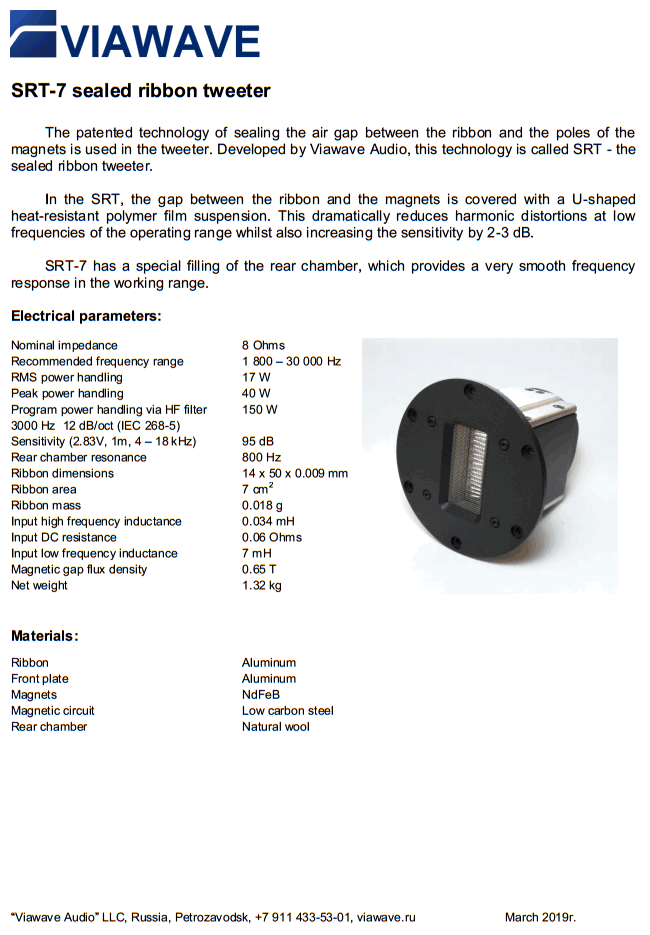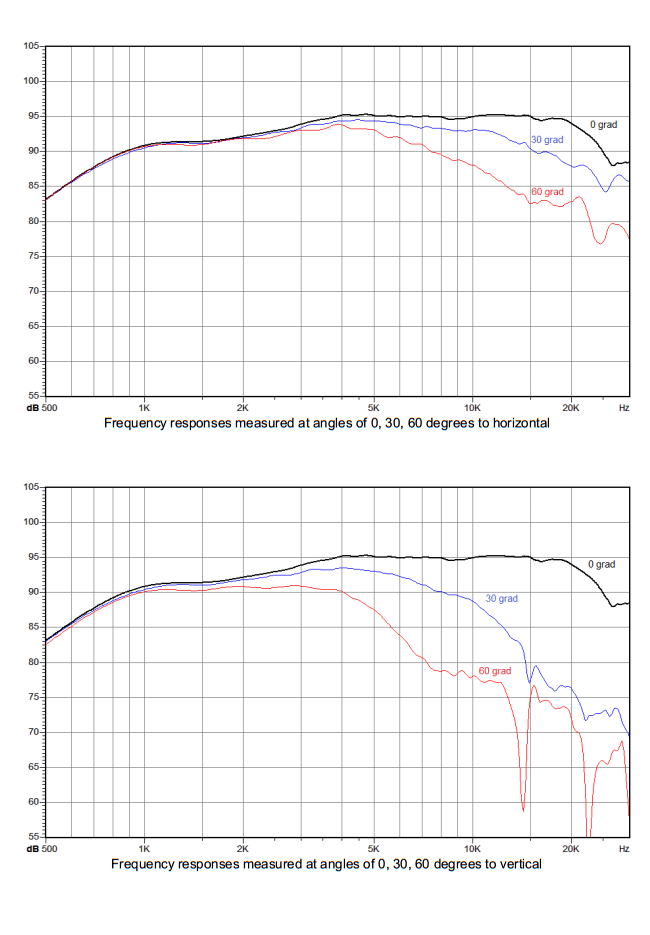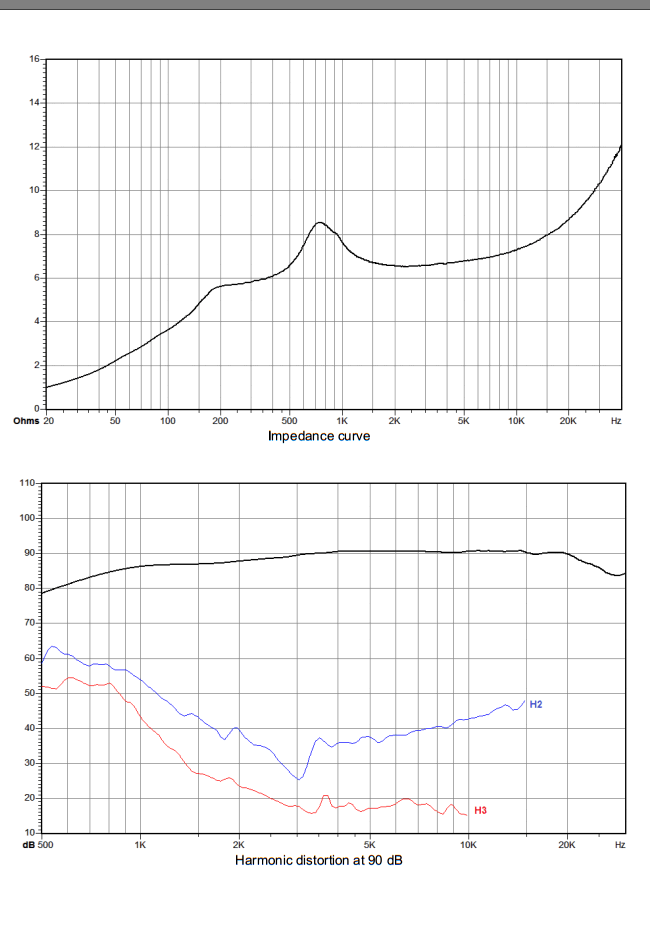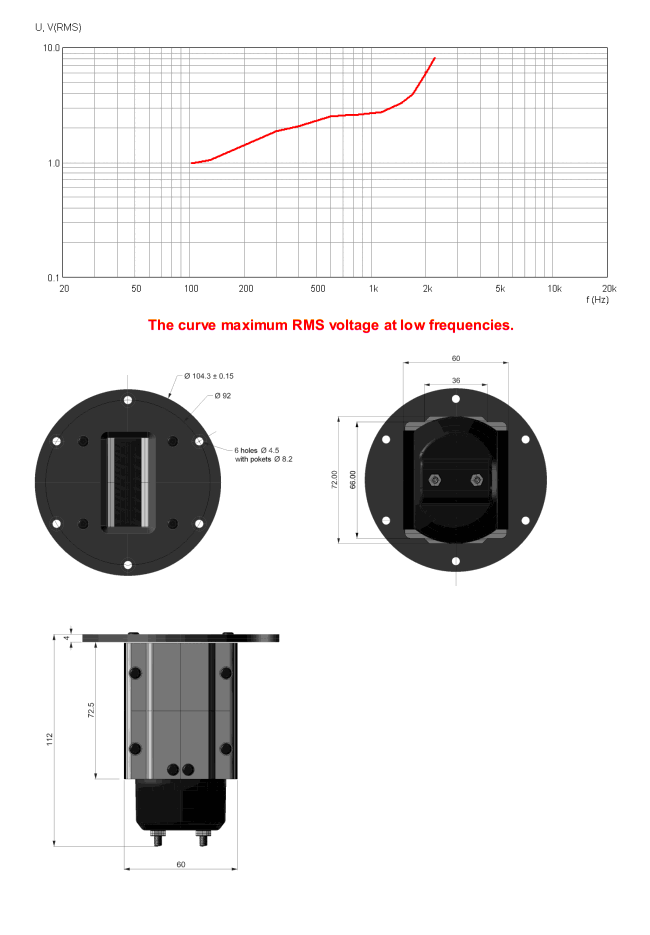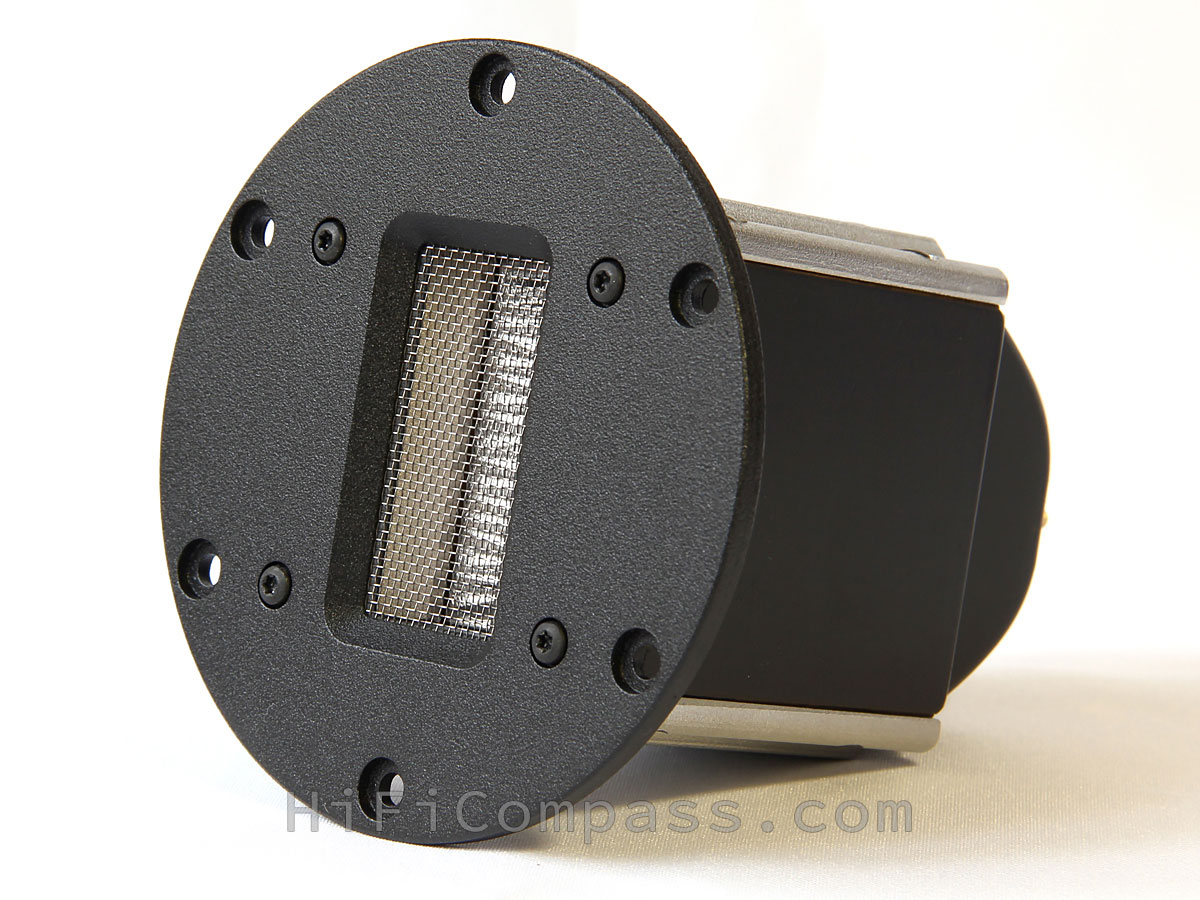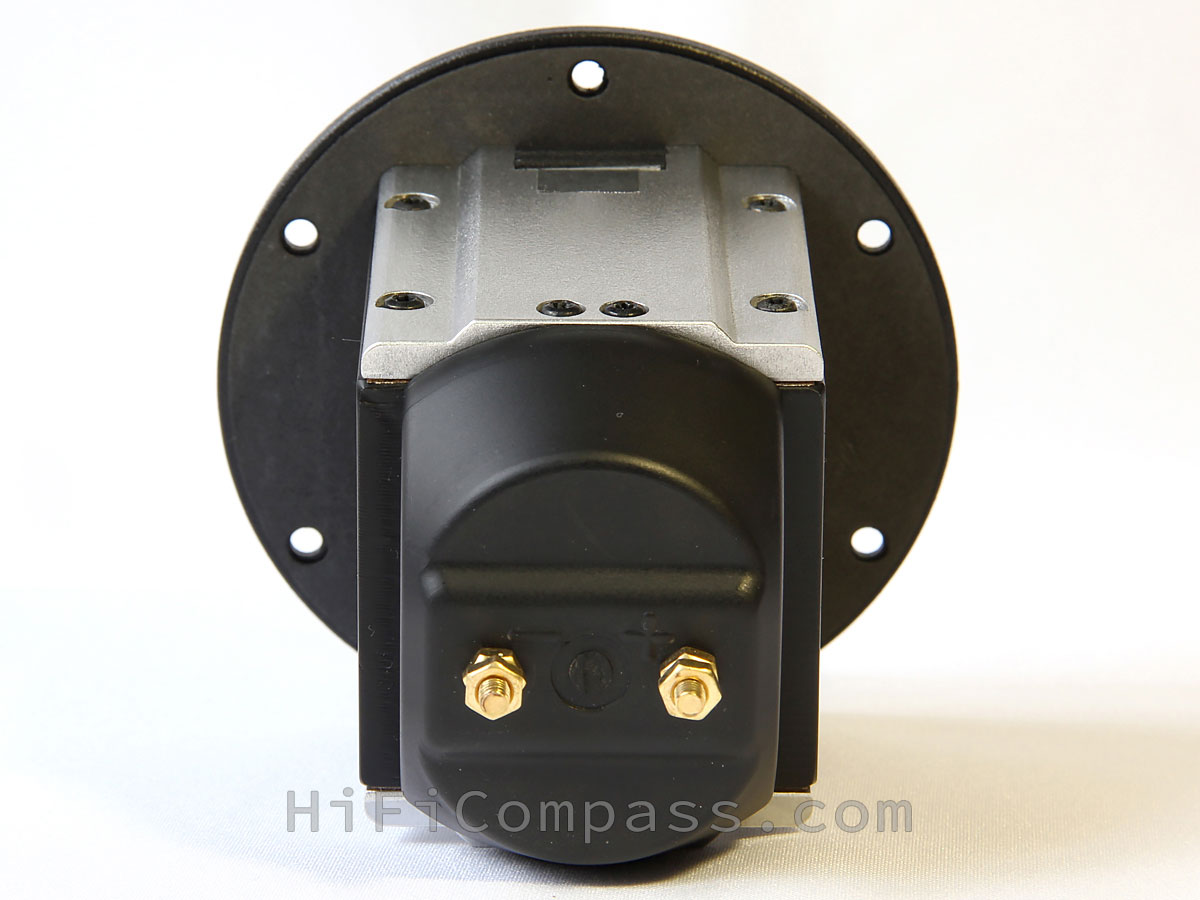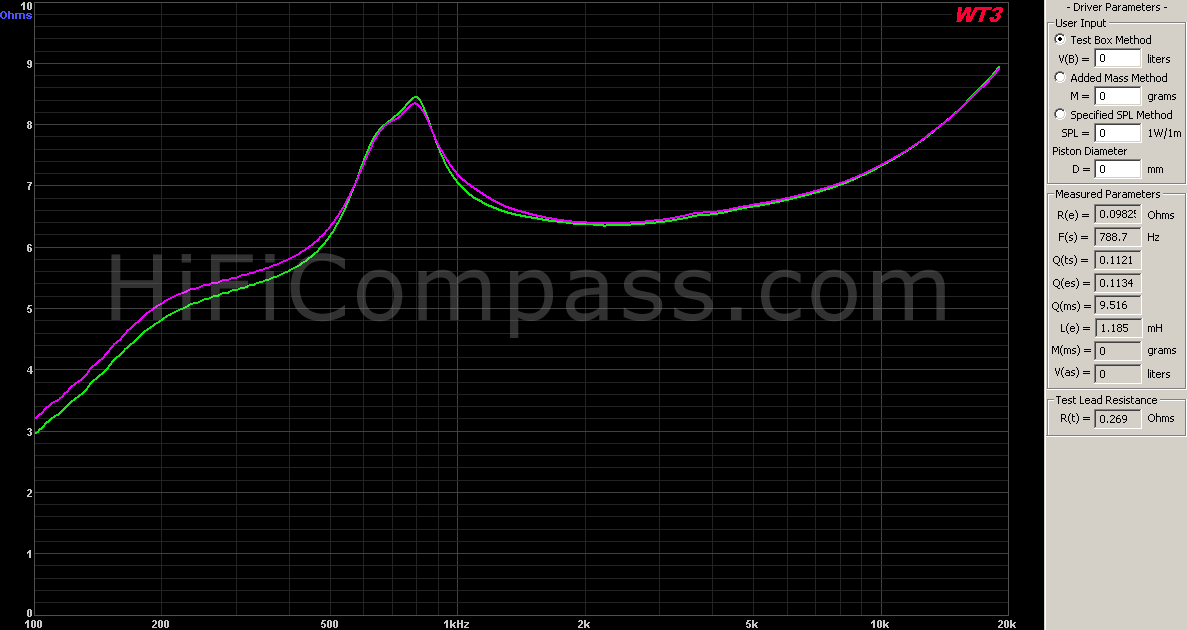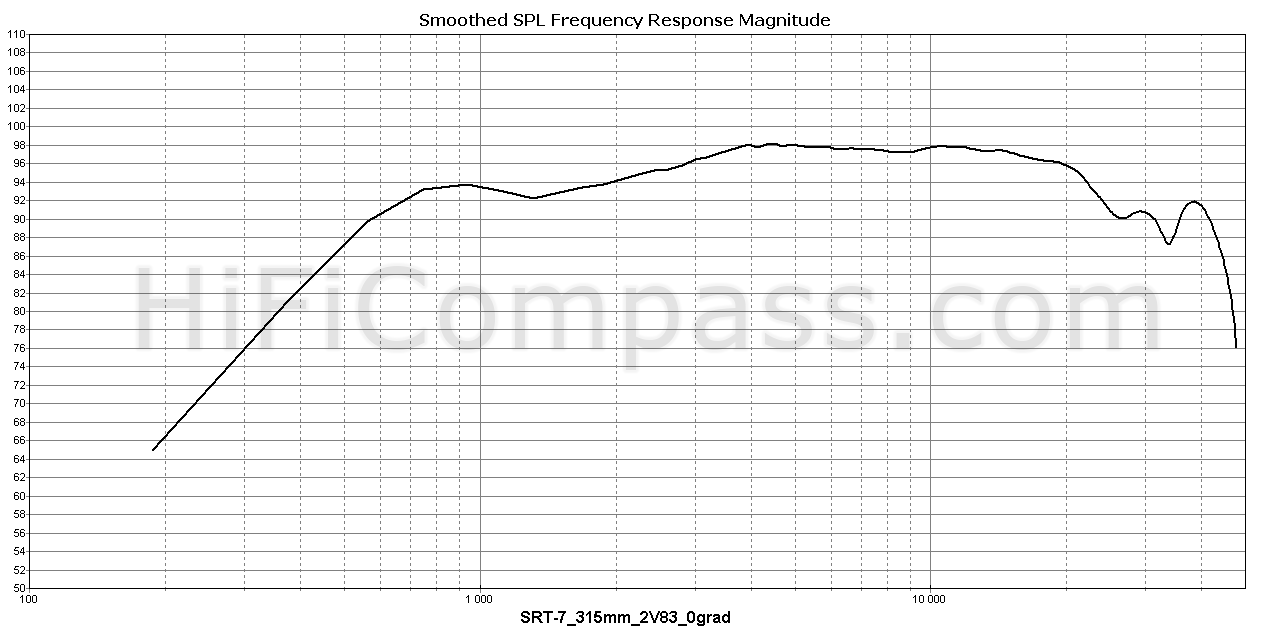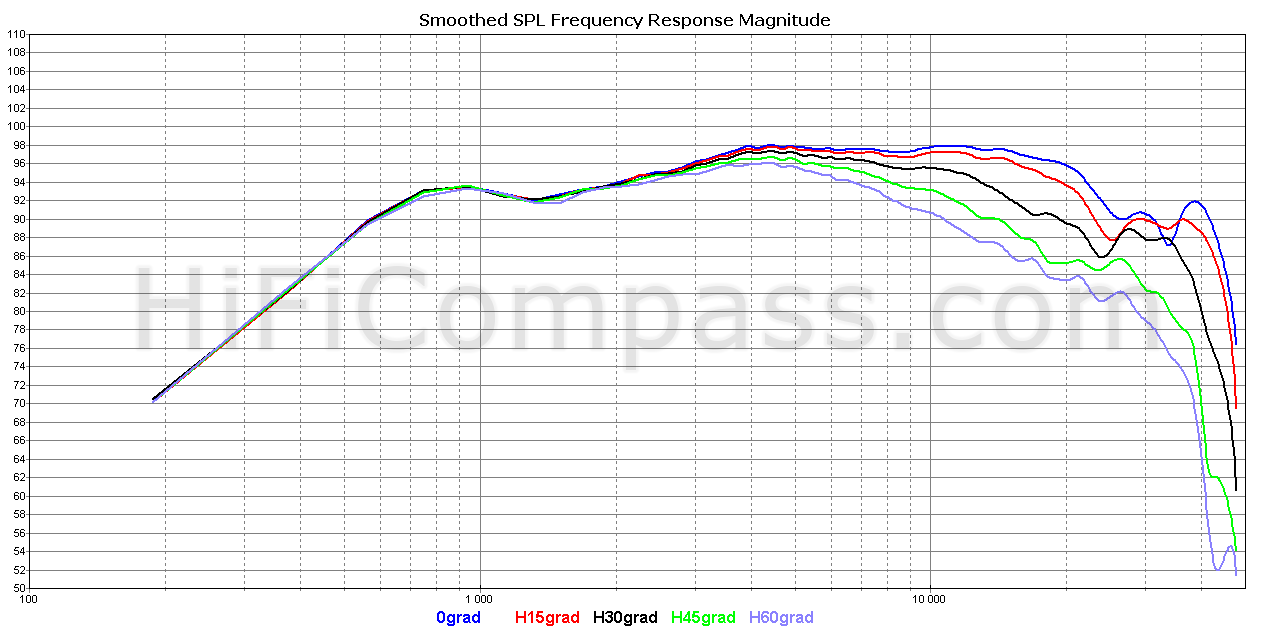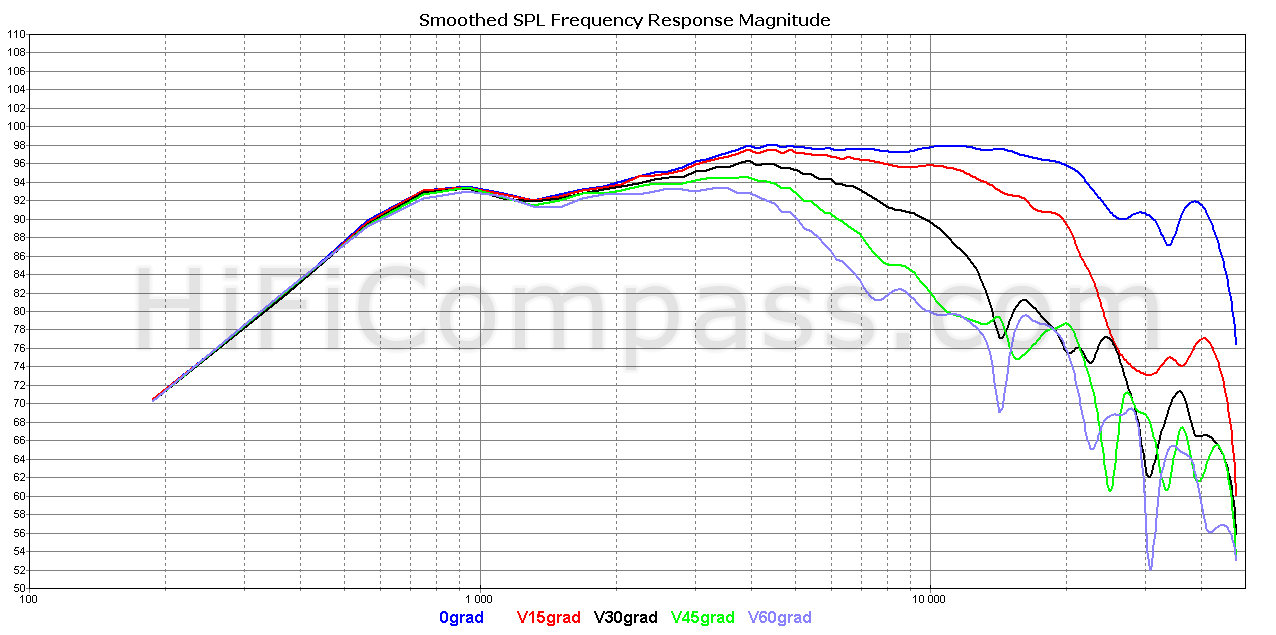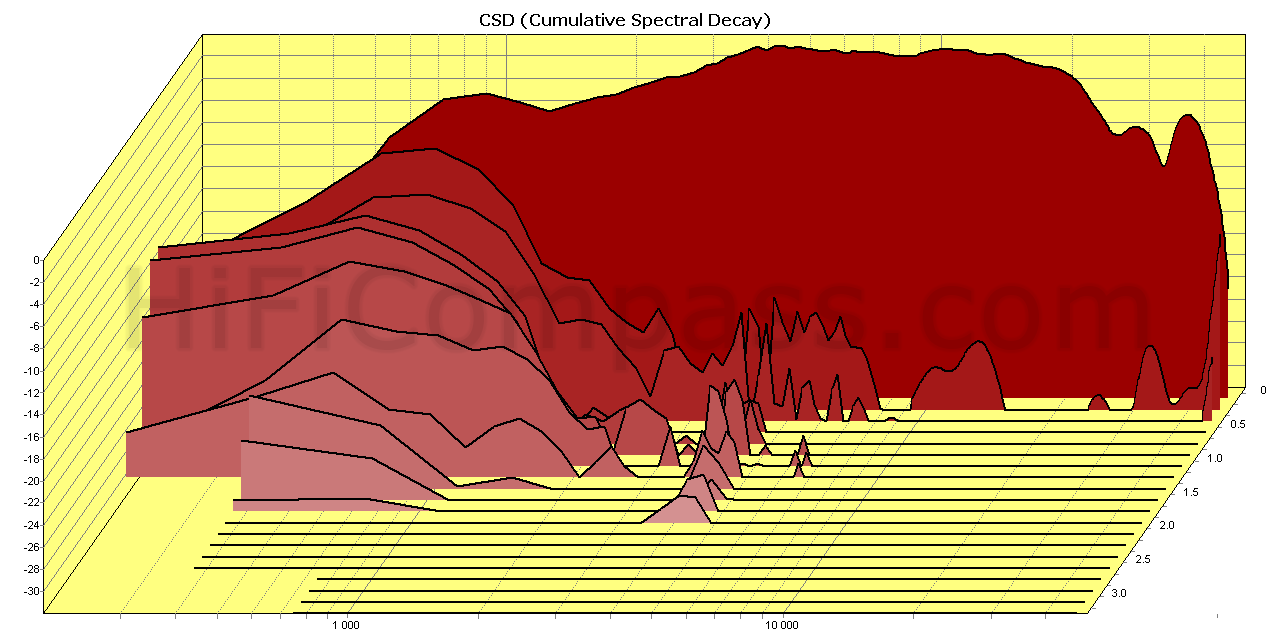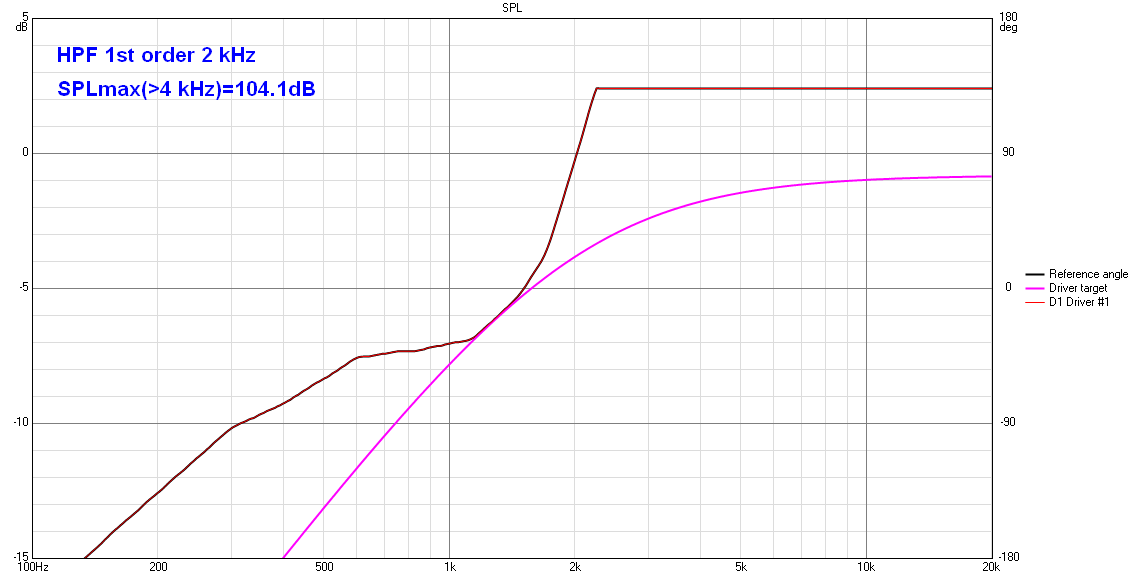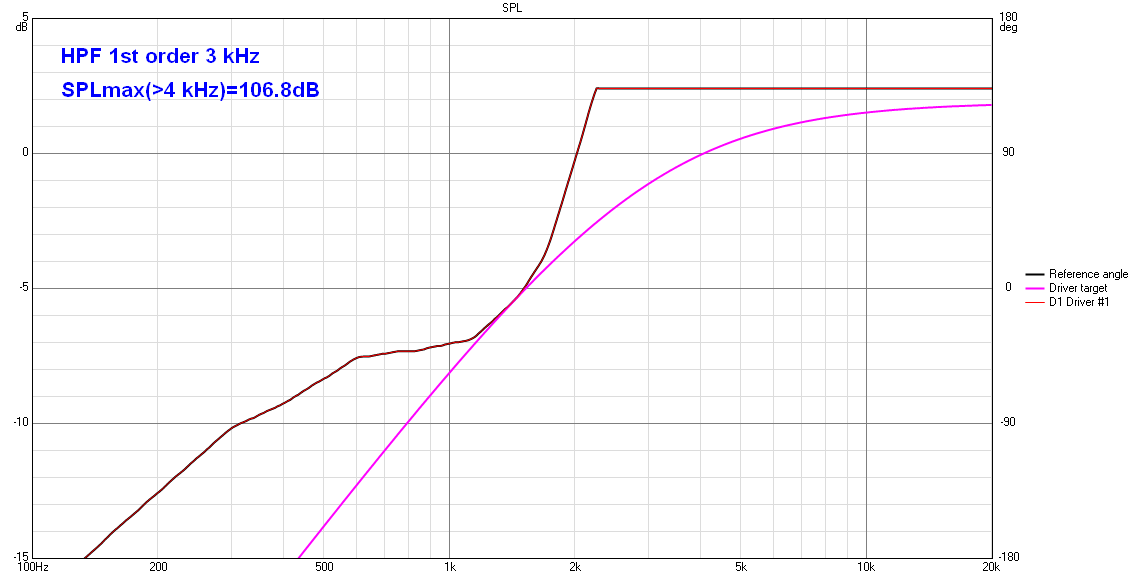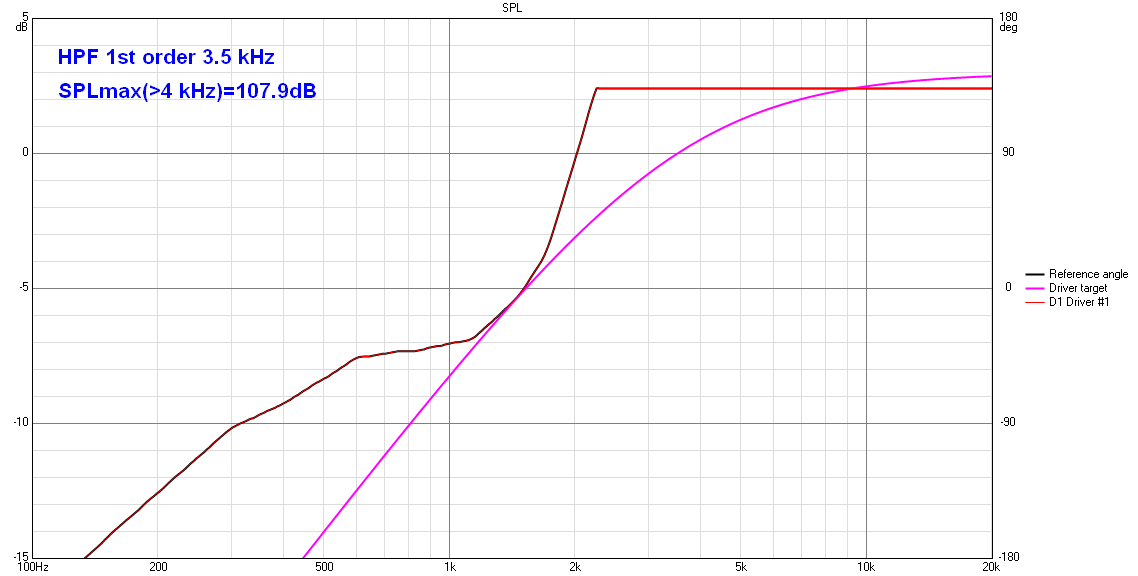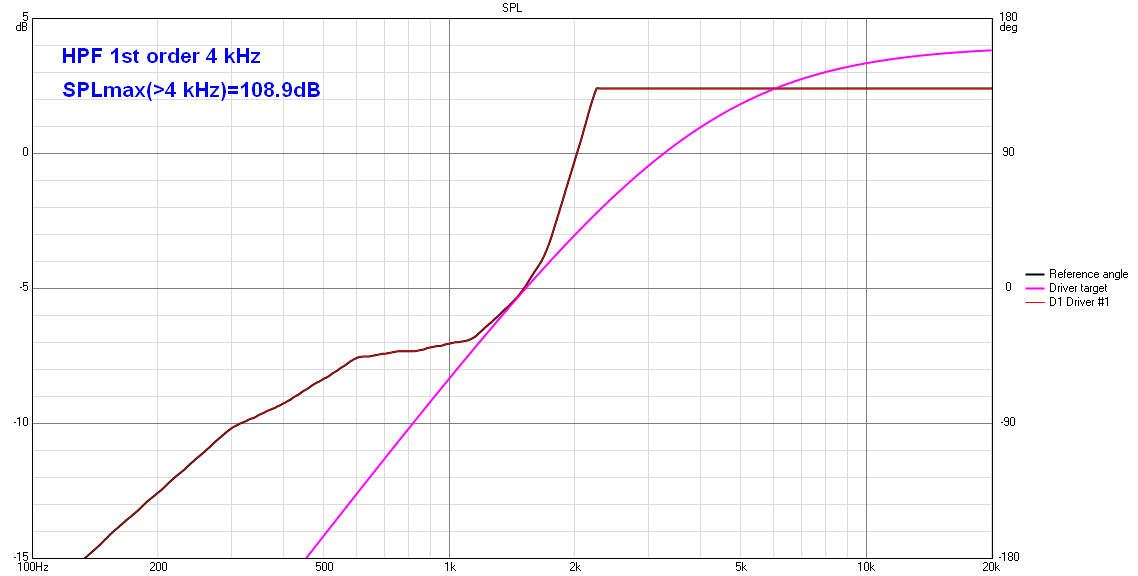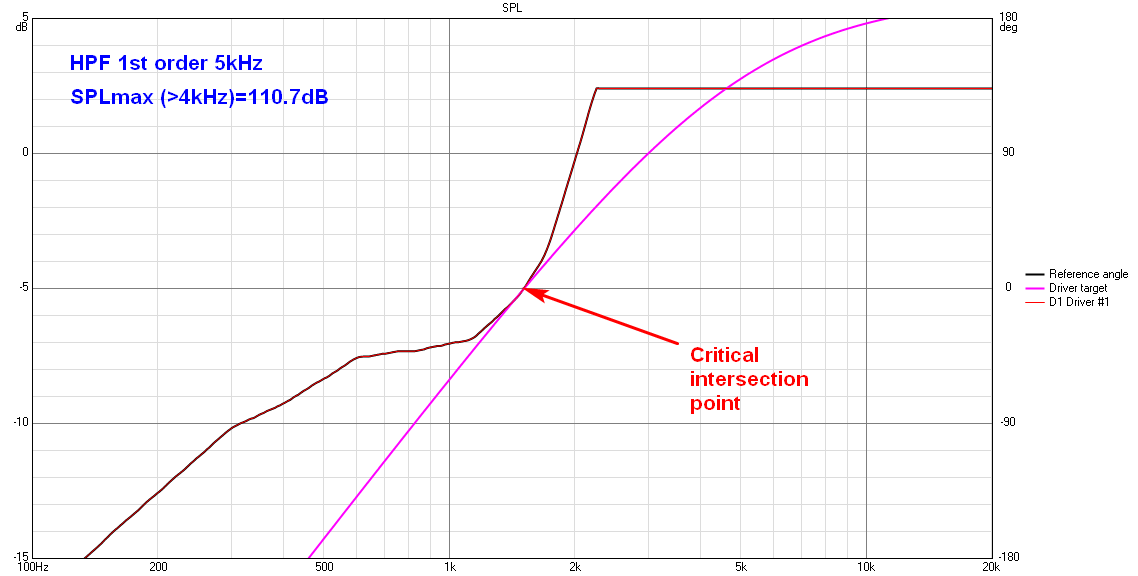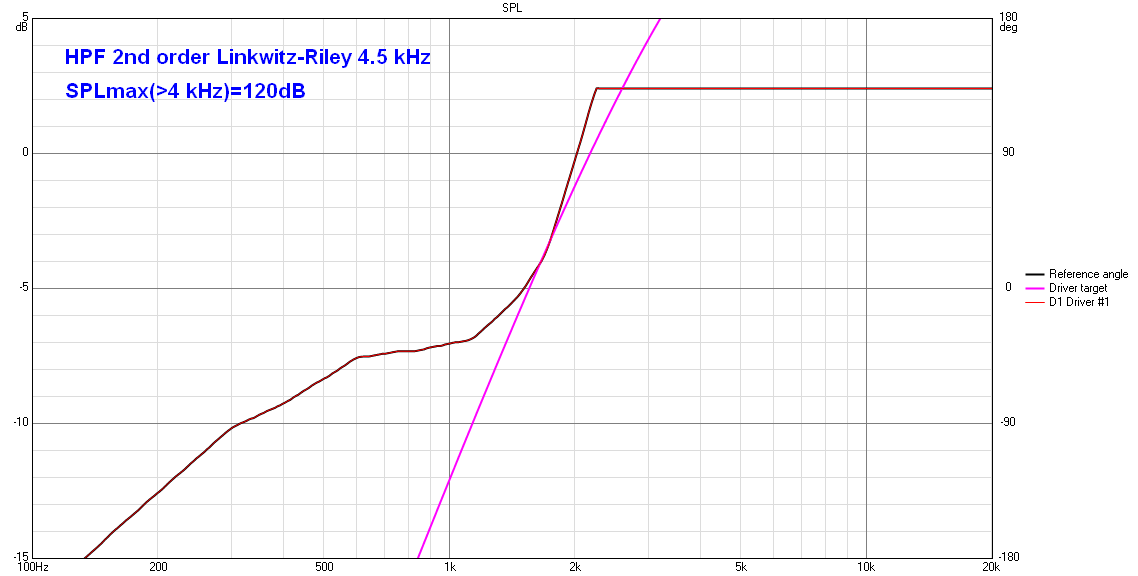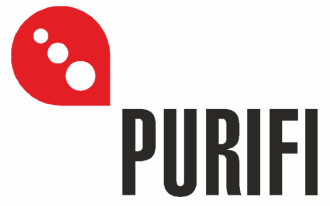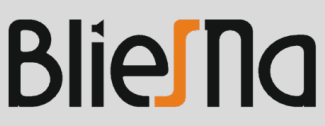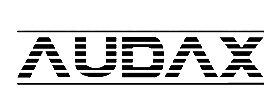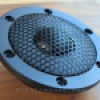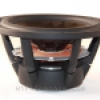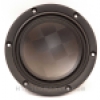HiFiCompass
Viawave SRT-7 ribbon tweeter
What is on the test bench?
Today we are meeting a very non-traditional sound radiator - the ribbon tweeter SRT-7 of the Russian company Viawave. I said "very non-traditional" not occasionally because this is the tweeter in which the first time in the world the technology of sealing air gap between the magnet poles and the ribbon membrane by using U-shaped polymer film have been implemented. In 2019 Viawave company could managed to accuire a Russian patent on its invention.
In some sense a hybrid of dome and ribbon tweeter got out. The first tweeter using such a technology was made in 2017 and called GRT-145. It got very good reviews in German magazine Klang&Ton, from famous Danish speakerbuilder Troels Gravesen and among DIY community all over the world. SRT-7 model is a succesor of GRT-145 and differs of it mostly by the more even frequency response.
You can get familiar with the history of Viawave company here.
Let's start examining the new tweeter and see how the new technology is justified or it is an one more manufacturer's marketing trick.
Why do we test this?
I'm always very curious to discover new tecnologies and interesting speakers, so it is the case. Speaker driver designing is the field where a progress creeps a bit faster than snail comparing to other segments of the audioindustry. It is very difficult to invent something really unique here.
I express my deep gratitude to Dmitriy Malinovskiy, the founder and the main developer of the Viawave company, for the SRT-7 tweeter samples provided for independent testing and the time spent discussing the technical aspects related to the design and application.
What did the manufacturer state?
The datasheet is very detail and contains all the information necessary for a loudspeaker designer. There is also a harmonic distortion diagram at the sound pressure level of 90 dB/1m and that is not often can be seen in manufaturer's data.
Viawave provides its tweeter with very useful data - the curve of the maximum sinusoidal RMS voltage at low frequencies. Ribbon tweeters are good known for their limited overload capacity at the low end of the working frequency range, so that diagram is a "Golden Key" in the designer's hands for the correct and full realization of tweeter potential when designing a crossover.
It is getting clear what the letters in the tweeter model name mean: SRT - (S)ealed (R)ibbon (T)weeter, i.e. a ribbon tweeter with the sealed air gap between the magnet poles and the ribbon membrane using a U-shaped heat-resistant polymer film. According to the manufacturer words the new technlogy made possible to get the folowing:
- preventing acoustic short circuiting between the front and back sound waves at low frequencies
- extending the operation frequency range down to 1.8 kHz
- increasing the sound output at the "low frequencies" by 2-3 dB
- significant reducing non-linear distortions which are inherent to "classical" ribbon tweeters
The tweeter has a special sheep wool filling of the back chamber, that allowed to reach very linear frequency response.
Visual inspection
 |
 |
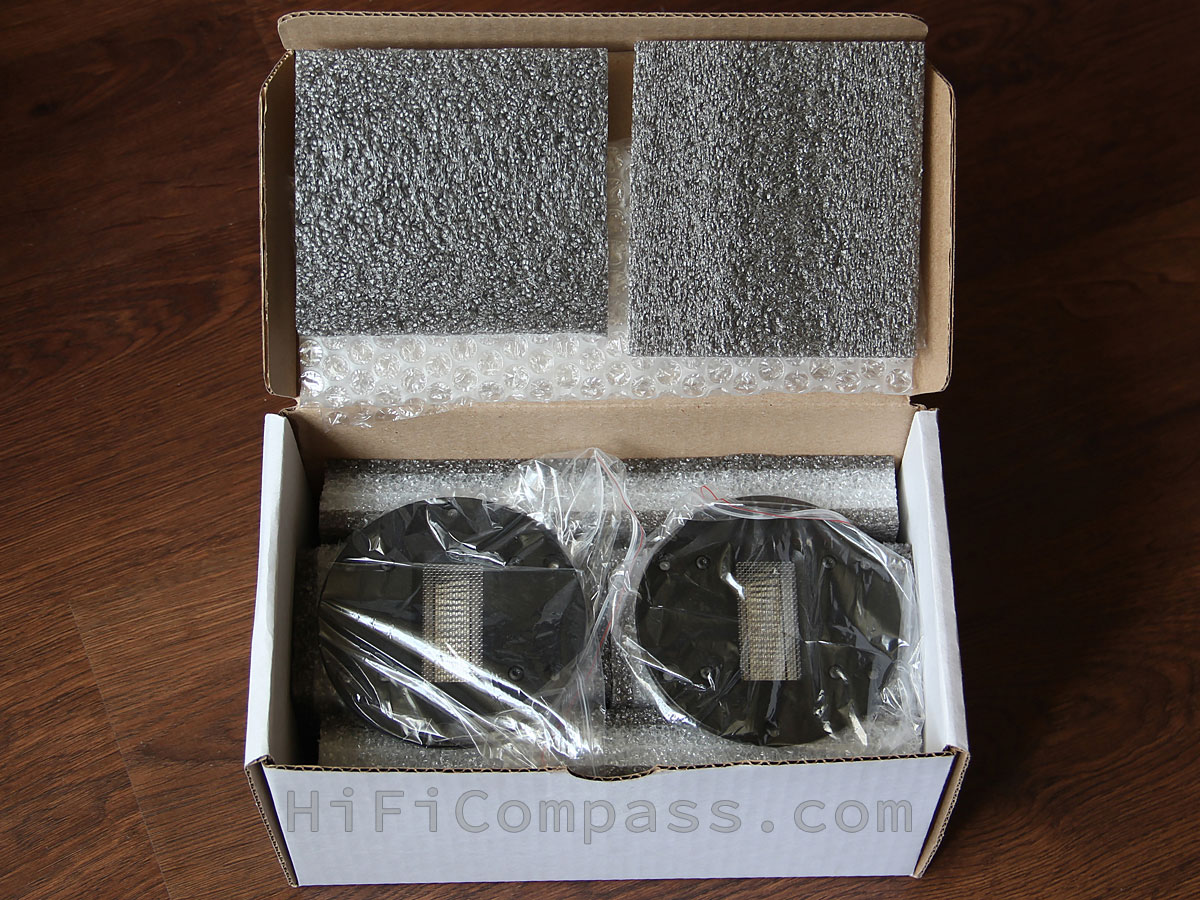 |
I couldn't believe that there were only a couple of tweeters inside. Scales showed 2,817 kg!
Everything is respectable inside, tweeters are wrapped in plastic wrap and surrounded on all sides by sheets of polyethylene foam. The tweeters feel very comfortable inside and, as it seems to me, such packaging can allow a very high degree of negligence on the part of any parcel delivery company. Fine!
I'm taking the tweeters out of the box and inspecting them.
The workmanship is superior, there’s simply nothing to complain about - all the parts are tightly fitted, no any cracks, skewness, burrs and glue traces. Labels are glued evenly. Weight inspires respect.The flange is diecast aluminum of 4 mm thick and is microtexture powder painted. There are no complaints to the coating. Six mounting holes have pockets for mounting screws heads. The screws, which fix the flange to the tweeter body, are recessed and look very harmonious. The membrane is protected by a very acoustic transparent metal grid. A foam rubber gasket is glued to the flange back side. Useful trifle.
The tweeter body is the main part of a magnetic circuit, covered on the top and bottom sides by aluminum covers, and on the back by a plastic cover, which incorporate a matching transformer filled with epoxy compound and gold-plated screw terminals.
Behind the protective grid wedge-shaped neodymium magnet poles and a ribbon membrane are visible. The ribbon has small embossing and decent transverse corrugation. Sucha a corrugation gives it additional rigidity, which is necessary to improve operation at low frequencies. At very careful examination you can notice at the edges of the membrane the same U-shaped yellowish surround.
In general, the construction is very well thought out and very good realized. Fine!
Impedance frequency response
The impedance curves of the two samples reflect a good selection of speakers in a pair. In the operating frequency range above 2 kHz the impedances are very smooth and almost the same, without any spikes, excepting a small prominence in the region of 3.6 KHz, which can hardly be seen. This is probably an echo of some kind of internal, but well-damped resonance.
The main resonance turned out even slightly lower in frequency - 788 Hz instead of 800 Hz declared.
I don't see any problems with the impedance when working with a crossover.
On-axis frequency response
The measured sensitivity in the range from 4 kHz and higher was on average 98 dB, which is 3 dB (!) higher than the manufacturer (95 dB) specified. This is more than a pleasant surprise. A direct radiating tweeter with an impedance of 8 Ohms and a sensitivity of 98 dB/2.83 Volt is an extremely rare thing and the range of its application in domestic systems is practically unlimited. Estimating the maximum sound pressure, based on the maximum program power of 150 W, turns out to be about 119 dB - this is a lot. Just fantastic!
The measured frequency response is in good agreement with the datasheet one. In the range above 4 kHz the response is exemplary flat. Below 4 kHz the response smoothly declines, going to a shelf of 94 dB, which extends down to 800 Hz, that is just incredibly low for ribbon tweeters of this size. By its width, both down and up in frequency, the SRT-7 frequency response is not inferior to good dome tweeters. The early response falling at low frequencies was always the Achilles heel of ribbon tweeters. As we can see, the technology of sealing the gap really works and the manufacturer’s statement about increasing of low frequency output are indeed confirmed.
The absence of any signs of parasitic resonances in the entire frequency range indicates good damping of the moving system and the rear chamber of the tweeter. Fine!
Off-axis frequency responses
Harmonic distortion (315 mm)
Step response
The step response shows an excellent slew rate, but the complete calming of the tweeter does not occur so quickly. The response goes to the zero point oscillating and crossing the zero line a couple of times - a consequence of the low resonant frequency and the high quality factor of the main resonance. When used in real systems with a cutoff frequency of 2 kHz, you can ignore it. Very well.
Waterfall
The waterfall shows the same effects as the transient response, in addition exposing hidden resonances which are difficult to see in other types of measurements. In this case an echo of the main resonance is being observed near 800 Hz. In the rest of the range the waterfall is just perfect. There is simply no second slice that follows after 0.17 ms, like all subsequent ones. Such a waterfall is possible due to the lightest membrane weighing only 0.009 grams with minimal inertia and proper damping. Fine!
The 4 kHz ridge does not belong to the tweeter, but is due to the artifacts of the measurement setup. It manifests itself in majority of my measurements.
Listening impressions
"How to use" recomendations
The modeling is evaluative.
| Type, order/cutoff of HPF | The test signal | The SPLmax in the range above 4 kHz |
|---|---|---|
| 1st/2 kHz | Sinusoidal | 104.1 dB |
| 1st/2.5 kHz | Sinusoidal | 105.5 dB |
| 1st/3 kHz | Sinusoidal | 106.8 dB |
| 1st/3.5 kHz | Sinusoidal | 107.9 dB |
| 1st/4 kHz | Sinusoidal | 108.9 dB |
| 1st/5 kHz | Sinusoidal | 110.7 dB |
| LR 2nd/2 kHz | Sinusoidal | 108.6 dB |
| LR 2nd/2.5 kHz | Sinusoidal | 111.3 dB |
| LR 2nd/3 kHz | Sinusoidal | 113.6 dB |
| LR 2nd/3.5 kHz | Sinusoidal | 115.8 dB |
| LR 2nd/4 kHz | Sinusoidal | 117.7 dB |
| LR 2nd/4.5 kHz | Sinusoidal | 120 dB |
What is the price and where to purchase it?
You can purchase SRT-7 tweeters, for example, in the following online stores:
- https://www.intertechnik.com/shop/loudspeakers/viawave/srt-7_1768,en,10035,961231
- https://www.audiophonics.fr/en/tweeter/viawave-grt-145-speaker-driver-ribbon-tweeter-17w-4-ohm-98db-the-pair-p-12835.html
- https://www.blackdotaudio.eu/glosnik-viawave-audio-grt-145-wstegowy-srt-4-ohm-para-2szt-p-984.html
The average retail price ranges from 240 to 340 EURO apiece, excluding VAT.
Summary
The testing confirmed a very close correspondence of almost all the measured parameters to the declared ones with the exception of sensitivity. It was 3 dB higher than the datasheet one, that is very good. The new technology of sealing the working gap has proven its real effectiveness, allowing to expand the application boundaries of ribbon tweeters without compromising the quality of sound reproduction. From now, doors for their application in two-way systems are really opened. Before the SRT-7 it was almost impossible and had to enjoy the delights of ribbon tweeters in three and more ways types loudspeakers only. Of course, from time to time there were clumsy examples of marriage of 6 "midwoofers with ribbons, but it's better to keep silent about their sound quality.
I can say with confidence that the Viawave SRT-7 tweeter is currently the best one in the world among the ribbon tweeters of the similar size.
So, what can be noted:
- very high sensitivity - 98dB/2.83Volt at 1 m
- very even frequency response
- low non-linear distortion
- excellent building quality
- real opportunity for its using in two-way loudspeakers down to the frequency of 1.8 kHz
- everything is so good that there’s nothing to complain about
More detailed measurement results can be found here.
Yevgeniy Kozhushko/08.12.2019
CONTACTS
- Ukraine
- (+380) 95 904 7827
- hificompass@gmail.com
LAST NEWS
-
27 Mar 2025
-
04 Mar 2025
-
25 Feb 2025
-
10 Feb 2025
